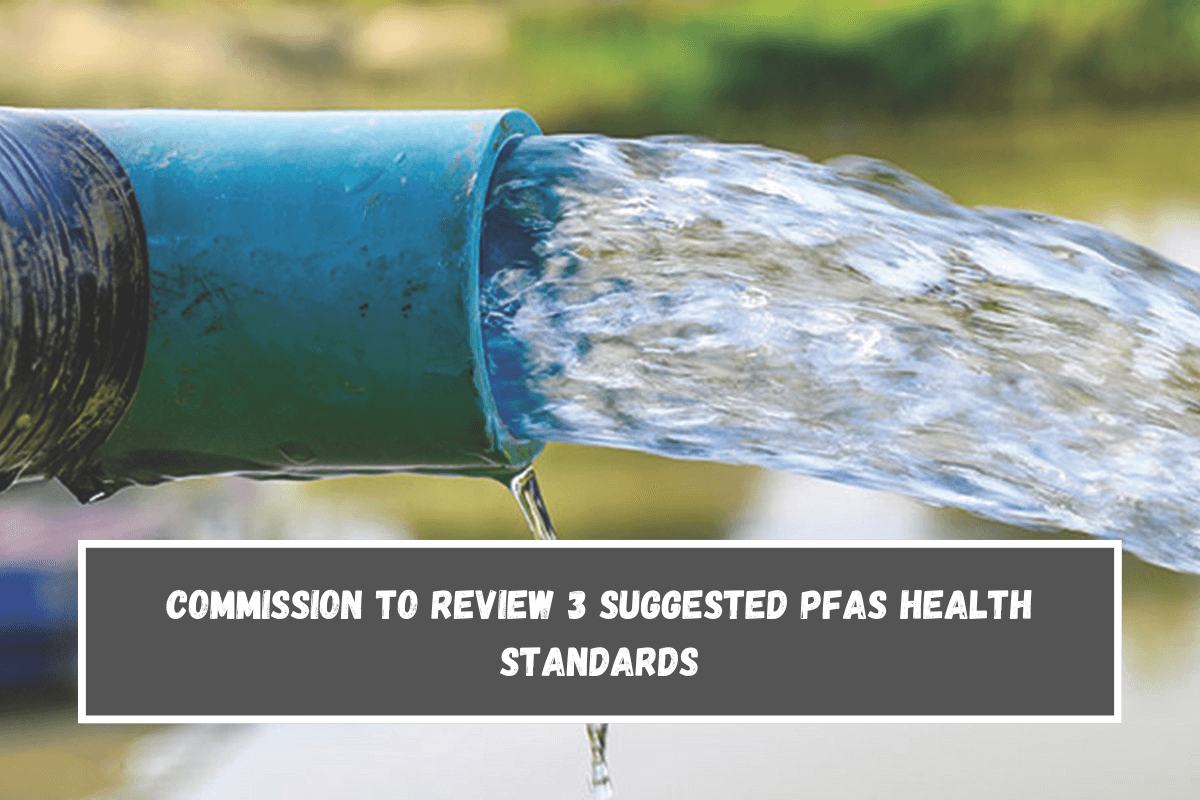Proposed health-based standards for PFAS prevalent in North Carolina drinking water sources may finally be authorized Thursday by the panel assigned to make rules that protect the state’s air and water resources.
The North Carolina Environmental Management Commission’s groundwater and waste management committee unanimously voted late Wednesday afternoon to put the proposed health standards before the full commission, which meets at 9 a.m. Thursday in Raleigh and will be streamed online, for approval for three per- and polyfluoroalkyl substances.
If the commission approves, then the proposed health-based criteria for PFOA, PFOS and GenX will go out for public comment. The short list of PFAS removes five other chemical compounds originally recommended to be included in draft rules the North Carolina Department of Environmental Quality, or DEQ, launched months ago.
Committee members pointed out Wednesday that they deleted those five because the practical quantitation levels, or PQL, the U.S. Environmental Protection Agency established for those substances will allow for fewer of them in surface waters than what DEQ had requested.
PQLs are the lowest concentration of a contaminant used in water testing. The EPA utilizes this testing procedure to calculate maximum contamination levels.
The commission may waive a 30-day notice to accelerate opening the public comment period, which is necessary in the rulemaking process.
The groundwater and waste management committee’s vote Wednesday moves forward proposed rules set forth by DEQ to set the health threshold for providing alternative water supplies to residents whose drinking water exceeds contamination limits, used to establish goals for cleaning contamination in groundwater, and used to limit permitted releases of PFAS to groundwater.
But a proposal by the North Carolina Department of Environmental Quality to set surface water restrictions for eight PFAS has again been stopped from getting before the commission for approval.
Following heated exchanges, the commission’s water quality committee Wednesday unanimously voted to instruct DEQ to draw up a proposed draft rule to establish monitoring for every industrial and national pollutant discharge elimination system, or NPDES, permit and require PFAS source reduction plans as part of every industrial and significant industrial user.
Commission Chair JD Solomon, acting as an ex officio member of the committee, offered the proposed rule as a method to go forward with passing a regulation that would lead to a reduction in PFAS concentrations in surface water.
“I think we’re at an impasse,” he added. “I don’t blame anybody at this point. I want to get it done for the people of the state and I want to have PFAS reductions in surface water.
This way we keep it with the industrial dischargers and we can identify who the bad players are and make them pay and not just spread it out to the whole watershed because we can’t agree on what all that stuff is right now. I want to get this out. I want to get this moving.”
DEQ Assistant Secretary Sushma Masemore noted that DEQ began required monitoring of PFAS discharges for NPDES permit holders about a year ago.
“We’re going to need guidance to require source reduction and associated plans,” she said to the committee. “Is this mainly voluntary? What are we going to be asking?
We’re going to need some guidelines in order to generate a credible [regulatory impact analysis] in order to produce a rule text that you all think fits this procedure and at the end of the day, when someone asks are we achieving savings, we want to be able to answer this question.”
The earliest this new proposed draft regulation would go before the full commission would be during its November meeting.
It is uncertain when and if the water quality committee will adopt DEQ’s proposed draft surface water standards for eight PFAS, including the PFOA, PFOS, GenX, PFBS, PFNA, PFHxS, PFBA and PFHxA to proceed to the commission for a vote.
Committee members at times verbally sparred over material included in DEQ’s proposed draft rule and regulatory impact analysis for surface water restrictions on certain chemical compounds.
Members highlighted concerns regarding data that links the transmission of PFAS contamination in surface water to contamination in agricultural crops and animals, such as cattle that drink water containing PFAS.
“My concern is, have we overstated the exposure of PFAS from food?” said Joseph Reardon. “I’m concerned that the way this is written and the percentage that we’re associated with PFAS from food is going to unduly implicate the food in North Carolina as being latent with PFAS, or that our national food supply is latent with PFAS, that we expect 20-some percent of our exposure to come from food.”
DEQ’s Masemore said that the water farmers and backyard gardeners use to grow food and hydrate livestock comes from surface water that could be polluted with PFAS.
“The record shows that 86% of the water used in the agricultural practices, whether it’s to grow crops or to raise animals, are extracted from surface water intakes,” she said. “We’re not saying that all of this is there.
What we’re arguing is by having a regulation that reduces that PFAS in those surface waters, and thus you’re reducing the concentration in those waters that are eventually used for these purposes, then what are the possible benefits associated with that.”
The committee agreed 5-2 that they will wait to advance on the proposed draft rule until they meet with U.S. Food and Drug Administration officials or receive a written response from that agency for clarity.
Committee member Marion Deerhake opposed the move, saying before votes were cast that remarks she had emailed the committee chair on Aug. 6 were not included in a packet shared with the committee and DEQ.
“I feel like my comments, my positive comments, are being ignored,” she remarked. “You said you would take care of it and it’s not in the package that you distributed.
I am quite concerned about the method that is being handled today. The comments that are pouring in on the (regulatory effect analysis) are selective. They are from certain parties that are interested in this rule for their own gain. I have to object to that.”
Some of her other committee members pushed back, arguing they have not been unduly influenced.
“I reject that assertion that we are being guided by people from the outside,” Tim Baumgartner remarked. “You’re making it seem like we don’t have brains to look at this ourselves and make these determinations ourselves.
I have an opinion on it. I don’t really care what the outside public says and I believe in our hearts because I think it’s the right thing to do for this motion to push forward and for the department and EMC to have a chat with FDA and (North Carolina Department of Agriculture) before this moves forward.”
Michael Ellison, the committee vice chair, concurred.
“I’ve received more phone calls and emails from outside individuals, somewhere around 200, that urged rapid and immediate action of PFAS based on these documents,” he said. “My questions are my questions and they’re technical.
It does not serve the people of North Carolina to go forward to public notice or perpetuate this process when we know we have a fundamentally faulty (impact analysis) that is, in many cases, dependent on fallacies, scientific fallacies.”















Leave a Reply